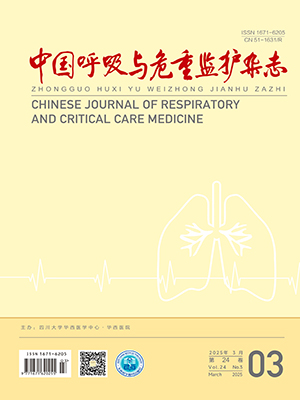Citation: HuangZhijian, LuoQin, SunFeiyu, WuAiqun, LinWei, ZhangJiangdong. Preliminary Investigation on Correlation between Brain Natriuretic Peptide and Cardiopulmonary Function, Prognosis of Patients with Interstitial Lung Disease. Chinese Journal of Respiratory and Critical Care Medicine, 2014, 13(5): 490-493. doi: 10.7507/1671-6205.2014119 Copy
Copyright © the editorial department of Chinese Journal of Respiratory and Critical Care Medicine of West China Medical Publisher. All rights reserved
-
Previous Article
Safety and Efficacy of Non-invasive Positive Pressure Ventilation Treatment Combined with Fiberoptic Bronchoscopy on AECOPD Patients with Acute Respiratory Failure JiangHua, NanYandong, LiChunmei, MaLijie, JinFaguang -
Next Article
Therapeutic Effect of Angiotensin-converting Enzyme 2 on Lipopolysaccharide-induced Acute Lung Injury in Rats ZouYuekun, LiYi, XueQing, JiangFuqiang, ZhangQi, LiYanbo, ZhangChunyan, LiuYuhong




